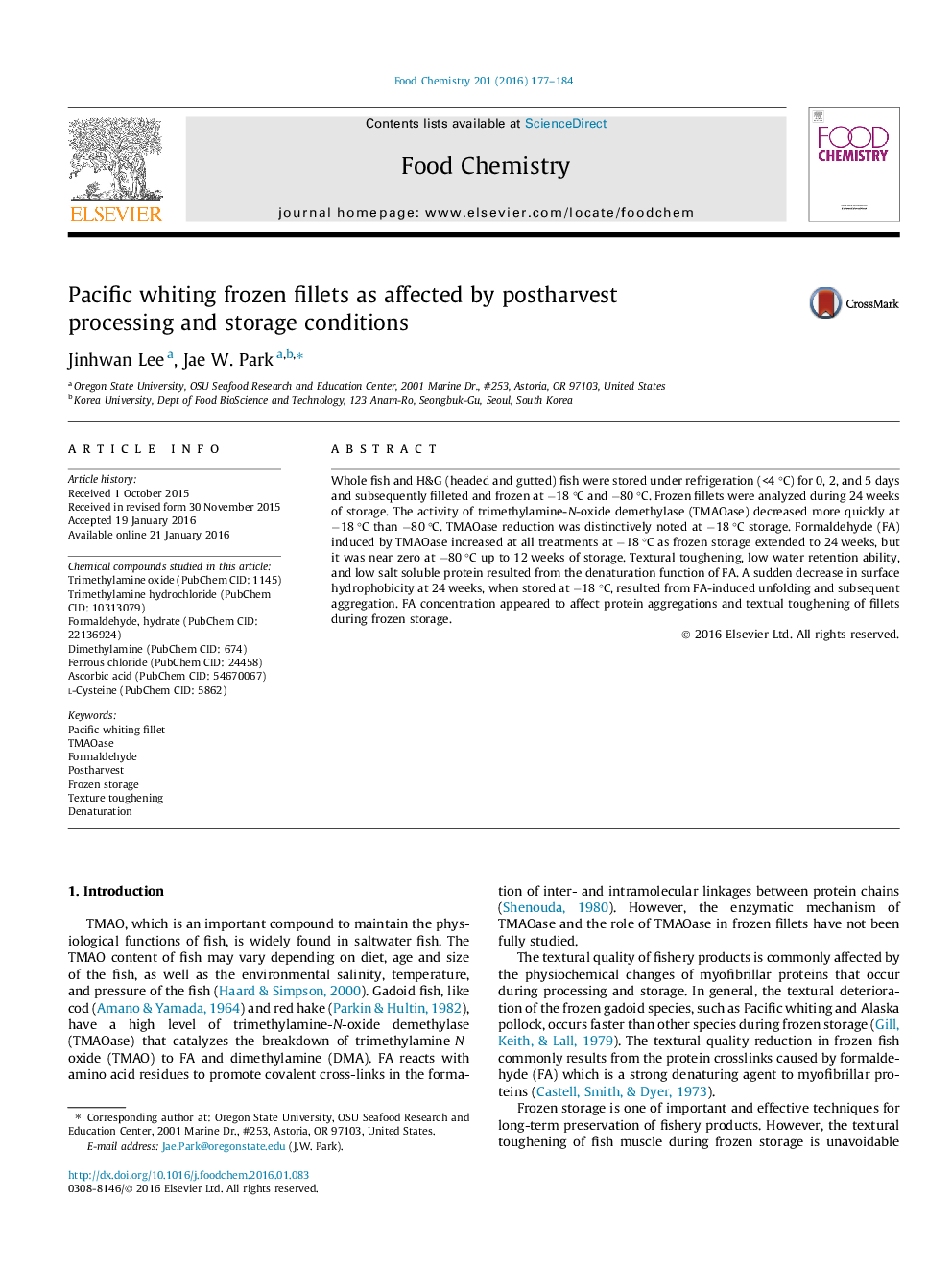| Article ID | Journal | Published Year | Pages | File Type |
|---|---|---|---|---|
| 7589349 | Food Chemistry | 2016 | 8 Pages |
Abstract
Whole fish and H&G (headed and gutted) fish were stored under refrigeration (<4 °C) for 0, 2, and 5 days and subsequently filleted and frozen at â18 °C and â80 °C. Frozen fillets were analyzed during 24 weeks of storage. The activity of trimethylamine-N-oxide demethylase (TMAOase) decreased more quickly at â18 °C than â80 °C. TMAOase reduction was distinctively noted at â18 °C storage. Formaldehyde (FA) induced by TMAOase increased at all treatments at â18 °C as frozen storage extended to 24 weeks, but it was near zero at â80 °C up to 12 weeks of storage. Textural toughening, low water retention ability, and low salt soluble protein resulted from the denaturation function of FA. A sudden decrease in surface hydrophobicity at 24 weeks, when stored at â18 °C, resulted from FA-induced unfolding and subsequent aggregation. FA concentration appeared to affect protein aggregations and textual toughening of fillets during frozen storage.
Keywords
Related Topics
Physical Sciences and Engineering
Chemistry
Analytical Chemistry
Authors
Jinhwan Lee, Jae W. Park,
